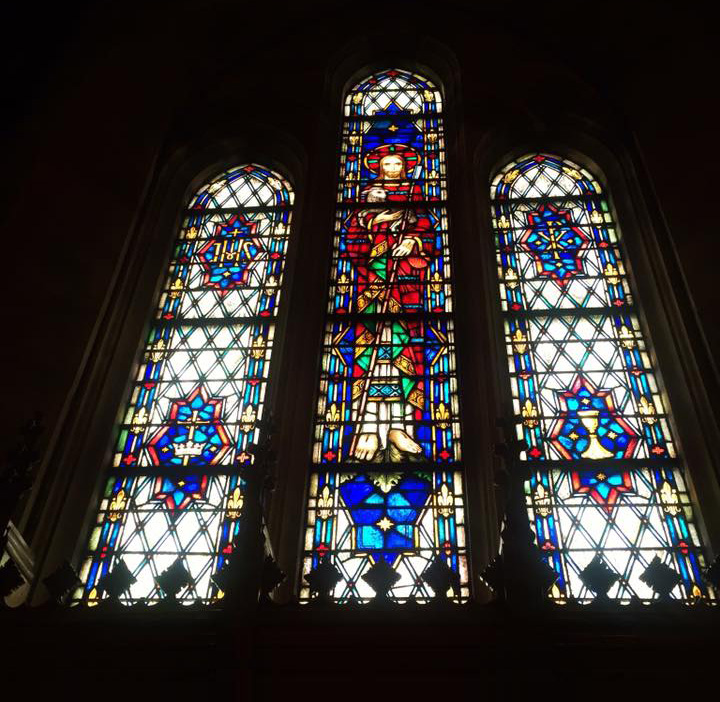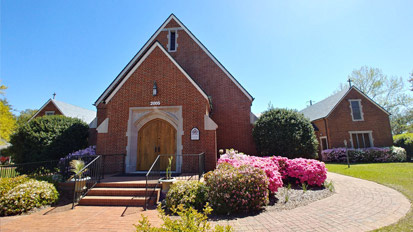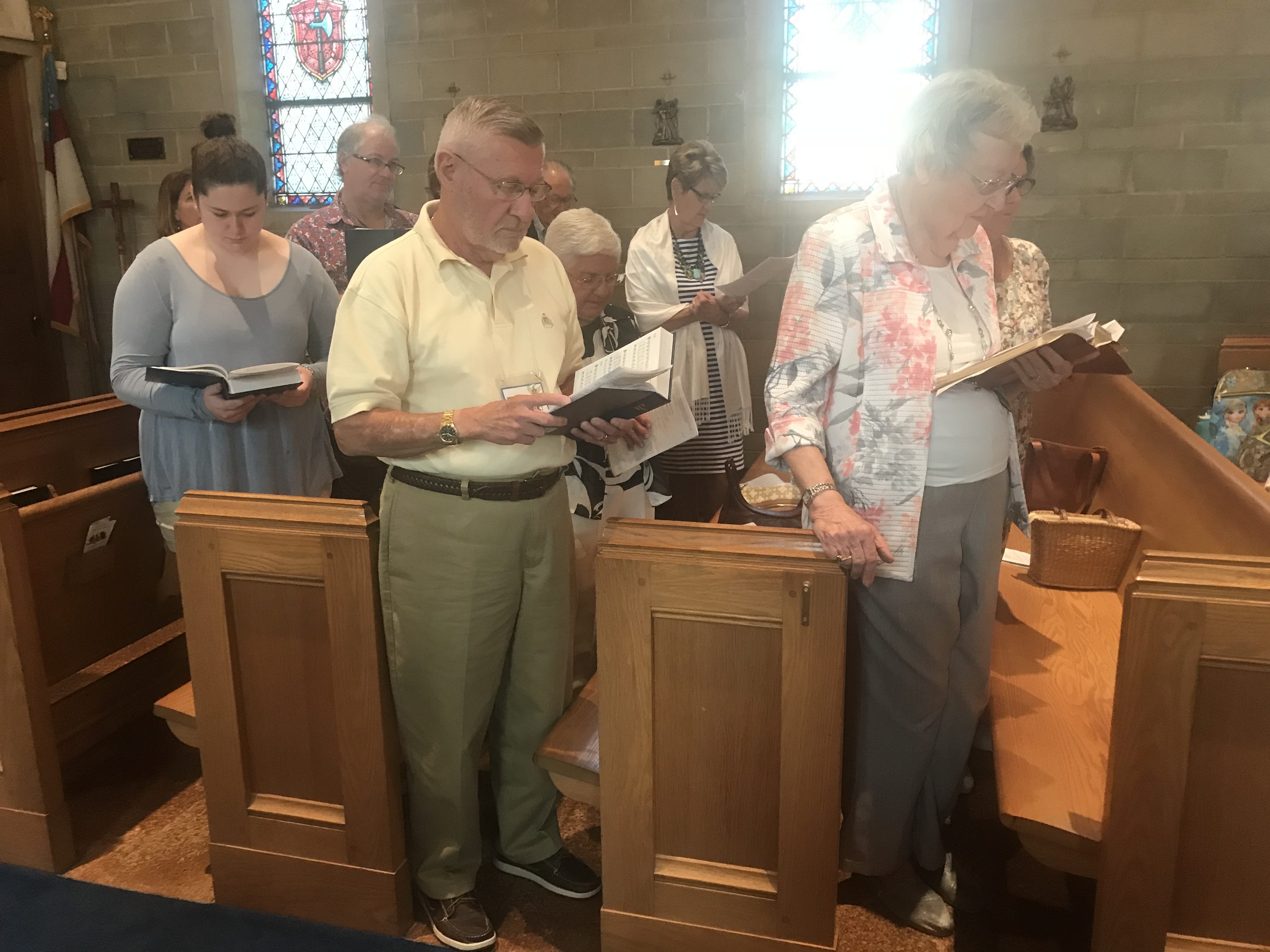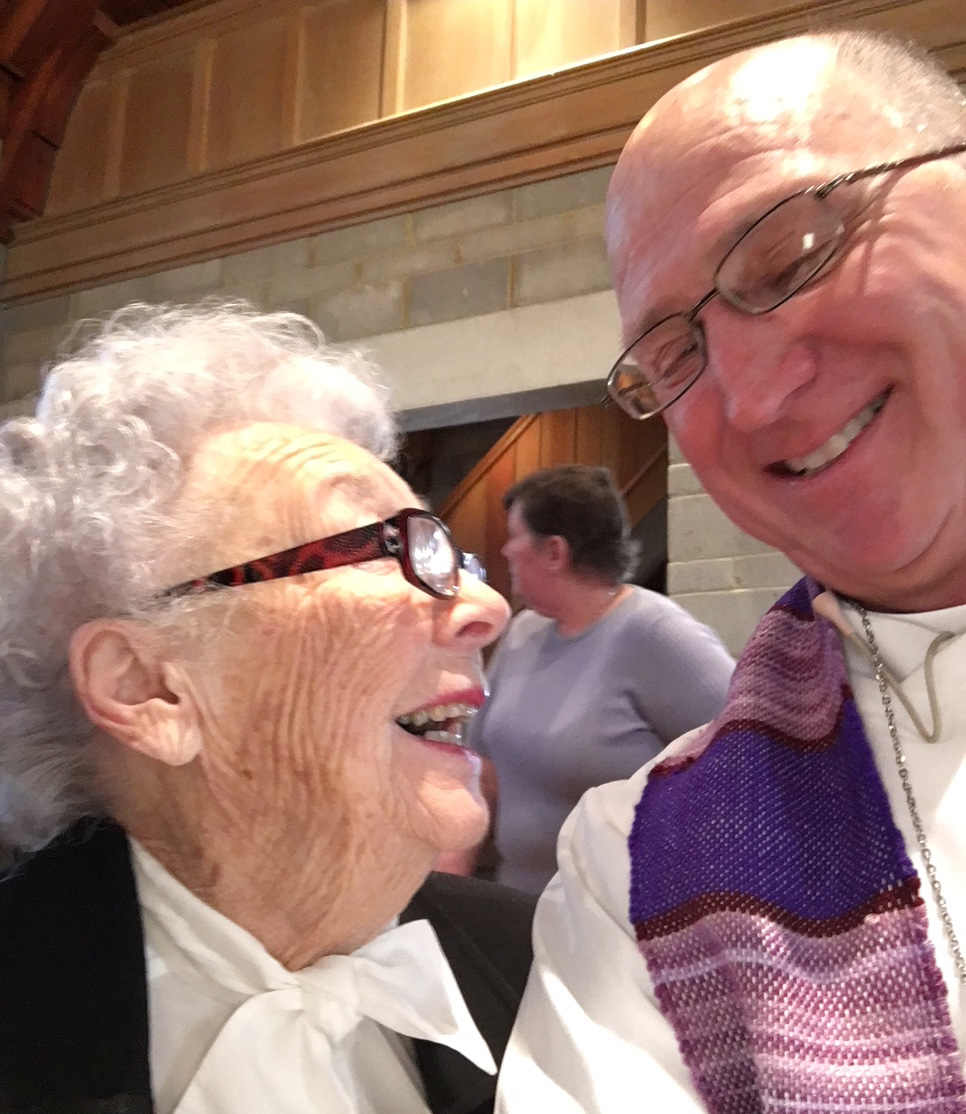
First of all, we want you to feel welcomed, comfortable and spiritually renewed. For first time visitors, an episcopal service may feel a bit intimidating. We want you to be able to relax and feel welcome and able to participate as you choose. We have a fully printed bulletin to help you follow along. The hymns are in the blue Hymnal in your pew.
We Gather For Worship
It’s good to arrive a few minutes before the service so you can get yourself settled. There will be ushers and others to greet and give you a bulletin which will guide you through the service. You can sit anywhere you would like. Sometimes new people will sit in the back just to check things out.
A few minutes before the service there will be some music called the Prelude. It is meant to help us gather ourselves and prepare for the service. Sometimes it is instrumental and other times it is sung by everybody.
The service will begin with a hymn and procession of liturgical ministers, people who have specific jobs to do during the service. Usually the procession is led by the cross and you may see people bowing to the cross as it passes by as a gesture of respect. You may do so as well, if you’d like.
Once we are in place, there are some prayers to gather our intentions for worship. These are called “Collects” (pronounced “cah-lect”). There may also be another song sung. Then we are seated.

We Hear God’s Word
We all sit down to hear readings. Typically there is a reading from the Hebrew Scriptures (Old Testament) and a reading from the Christian Scriptures (New Testament). In between those is typically either the singing or reading of a portion of the Psalms. There is always a reading from one of the Gospels.
Following the Gospel a sermon is preached, usually by a priest or our deacon. The sermon is meant to take what we have heard in the readings and engage those learnings with our current lives.
After the sermon, we say the Nicene Creed, an ancient statement of faith used by most Christian churches which binds us together with Christians of all generations.

We Pray
The Prayers of the People are a series of prayers led by someone. There is usually a response by the entire assembly at the end of each one. These are all printed in your bulletin.
During the prayers you will see some people standing and many kneeling. Some people do not kneel because of physical difficulty doing so. Others simply prefer to stand, and other prefer to kneel. You are welcome to stand or kneel; or if standing and kneeling are physically difficult, you may sit.
Usually we we say The Confession. The confession is an opportunity to confess together the ways we have not loved God or others. Sometimes people kneel for the confession as a sign of their penitence. At the conclusion of the confession, the priest says words reminding us that God forgives our sins.
We then say “The Peace.” The priest say’s “The Peace of the Lord be always with you.” And we respond “And also with you.” Then we turn and greet others around us by saying “Peace be with you.” People may shake hands or embrace each other.

We Are Fed At The Lord’s Table
Every Sunday, we celebrate Jesus’ life, death and resurrection in what is called “The Holy Eucharist” or “Holy Communion.” Prayers are said All people who are baptized Christians are welcome to receive communion at St. Andrew’s. After a few of the gathering sentences, you will see many people kneel, and many remain standing. Again, you may do either. Both are acceptable.
People generally come forward and stand or kneel at the altar to receive communion.
If you don’t want to receive communion that is totally fine. You can remain in your seat, or you can also come forward and cross your arms over your chest. The priest will offer you a blessing instead of communion.
If you do want to receive, please hold out your hands and the priest will put a piece of bread in your hand. Then another liturgical minister will come with the cup of wine (and it is wine!). There are few choices here. You can eat the bread when it is put in your hand and then take a sip of wine from the cup. (It is okay and actually helpful for you to touch the cup and help guide it to your mouth.) If you don’t want to drink from the cup you can also leave the bread in your hand and the person with the cup will dip the bread in the wine and then place it in your mouth. It is also totally fine to receive only the bread or only the wine; either is considered a full receiving of communion.
We Are Sent Out To Serve Christ
After everyone has received communion we all stand and say a prayer which is in your service leaflet. The priest then asks God to bless us. Another song is usually sung by everyone at this point during which the liturgical ministers may process out. At the very end we are dismissed by a deacon or priest, sent out into the world.
